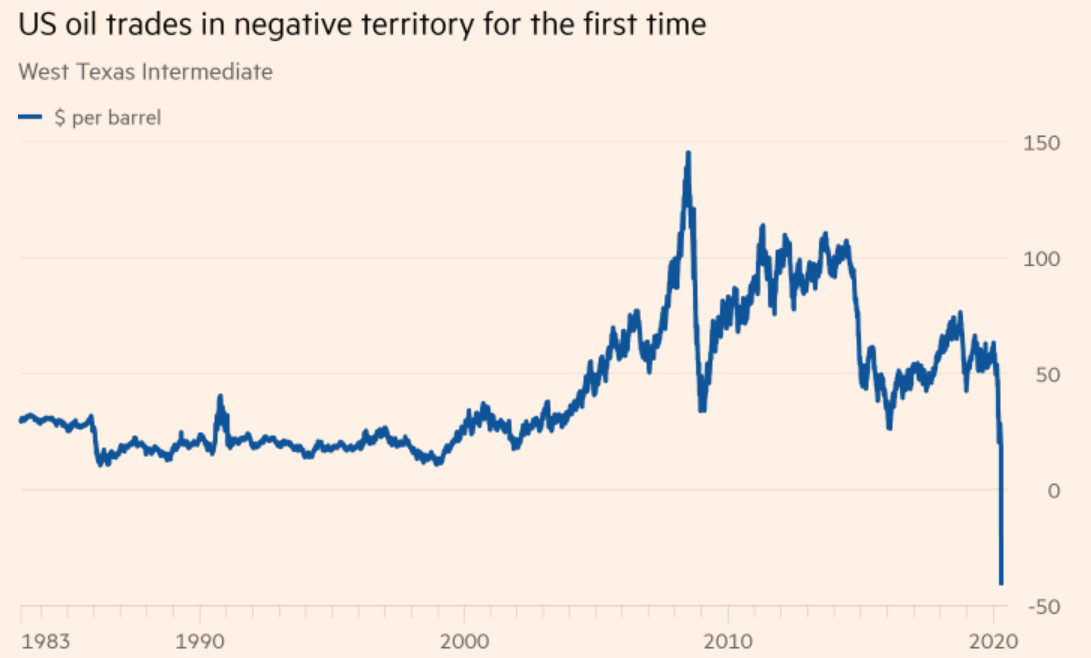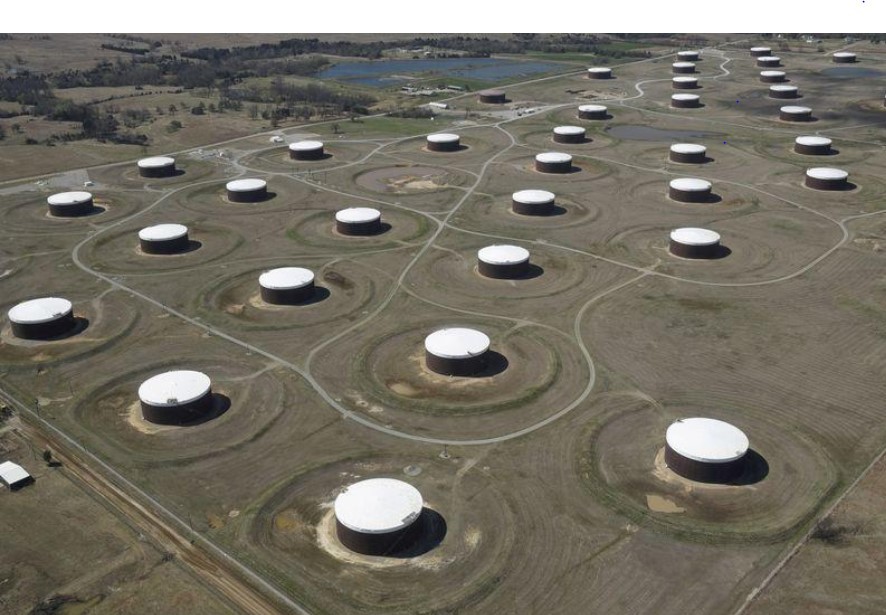Insights
COVID-19 Update: Turmoil in the Oil Market
Monday brought another example of extreme market volatility in the coronavirus era. The May contract for West Texas Intermediate oil, which expired Tuesday, collapsed to below $0 for the first time ever and settled at -$36.63 per barrel, down from $18.27 on Friday. These extreme price movements highlight the ongoing impact of the pandemic on financial markets. June futures prices also fell 15.6% to $21.09 per barrel. Sadly, your next tank of gas will not be free, but it will be cheaper.

Source: Financial Times
Crude oil is one of the most actively traded commodities. Other important commodities like gasoline and natural gas are strongly linked to crude, and price fluctuations tend to reverberate through the market. West Texas Intermediate (WTI) crude comes from US wells, and NYMEX WTI is favored by day and swing traders around the world. This is due to the high daily volume of trades, as NYMEX WTI trading can reach levels of up to 1.2 million contracts bought and sold per day. As our clients know, we do not invest in oil contracts and have had a longstanding underweight to fossil fuel companies because we believe that the energy sector as a whole will face significant challenges due to climate change. We continue to believe innovative high growth companies will provide superior returns to “cheaper” but lower value-added businesses.
When an investor purchases a WTI contract, the investor must take delivery of the underlying crude by a certain expiration date. These investors usually “cover” their contracts before the expiry date, and those who actually want oil receive the delivery and store the oil. In Monday’s extreme selloff, increasingly desperate investors sought to cover May futures contracts in order to avoid the obligation of taking in and storing thousands of physical barrels of crude oil on Tuesday. Nobody wanted the oil because storage capacity is scarce. Indeed, sellers ultimately had to pay buyers to take the oil off their hands.
In addition to falling oil demand caused by the global economic slowdown, geopolitics have also increased stress in the oil markets. In early March, disagreements over production levels between Russia and Saudi Arabia escalated into an all-out price war. Russia rejected a proposal by OPEC to cut production. In response, the Saudis sought to undercut Russia and raised output by as many as two million barrels per day. Oil prices collapsed, along with energy stocks. The price and output war flooded the global market with an excess of oil, much of which went into storage. Now, storage capacity is reaching its limits.

Crude oil storage tanks in Oklahoma. The 80 million barrel storage capacity in Cushing, Oklahoma could be filled in May. In February, it was at less than 50 percent of capacity. A record 160 million barrels of oil are also being stored aboard supertankers moored outside major ports.
Source: Reuters
Earlier this month, major oil producing nations reached an agreement to cut global oil output by 10%, the largest production cut ever negotiated. Hope for market stabilization returned, and the energy sector briefly rebounded. But it now seems that even this huge production cut may not make a difference as the world still has far more oil than it can use. While record low oil prices may seem attractive to consumers, the dynamics that led to this situation are worrisome. A technical disruption linked to geopolitical tensions, storage capacity, and virus-related demand destruction has sent the massive crude market into a precipitous downward spiral.
Monday was another cautionary example of how fast even very large, liquid markets can re-price. In just over one month, the oil sector has crashed, rebounded, and now fallen to new and unprecedented lows. A sector with thousands of informed and sophisticated investors was turned upside down. We continue to be cautious and expect high levels of volatility across financial markets as the demand and supply shocks created by the pandemic unfold.